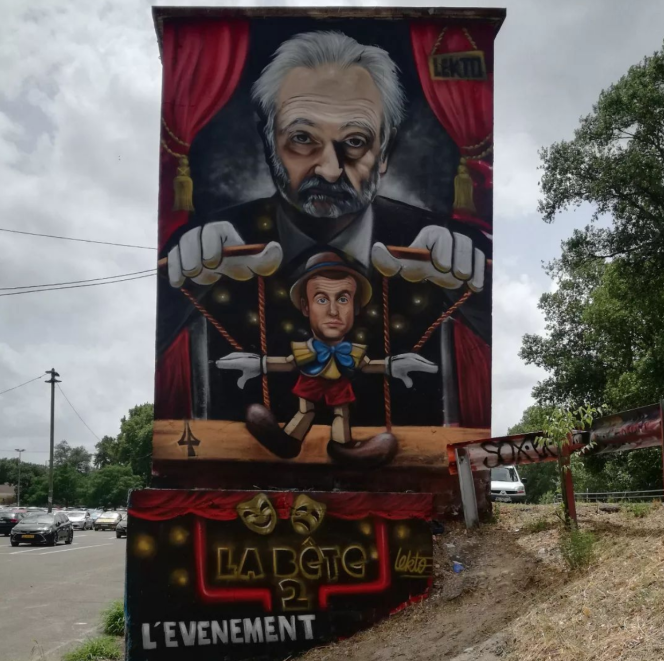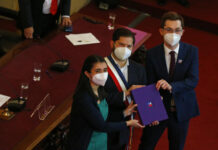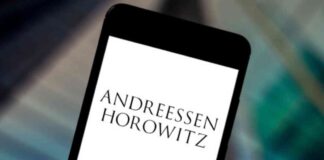The puppeteer has a bad look, a chiaroscuro underlines his features. Dominating the gable of a large technical building at the entrance to Avignon, this character with white gloves has the caricatured face of the economist, senior civil servant and writer Jacques Attali. In front of him, on a stage, strings in hand, he animates a puppet: this one represents Emmanuel Macron, in the guise of a Pinocchio with a blank stare. On Wednesday, June 22, the first photographs of this mural by graffiti artist Lekto, bearing the title “The Beast 2 The Event”, began circulating on social media, sparking a wave of outrage and a political mess that shone into the spotlight on the City of the Popes, a few days before the opening of the Avignon Festival.
As his Instagram account shows, Lekto has specialized in protest murals for two years. In March, he had painted the Minister of Education, Jean-Michel Blanquer, with a dunce cap, then the Minister of Health, Olivier Véran, as a “soldier of Bigpharma”, a sort of zombie overdosed on vaccines. Previously, he had notably represented the singer Francis Lalanne dressed in a yellow vest, or even the doctor Didier Raoult in the midst of a controversy around chloroquine.
Several of these frescoes had been painted on the same section of Avignon wall, in full view from the road along the Rhône to the northeast of the city, without causing much excitement so far. This time, it is the anti-Semitic nature of the imagery that is strongly denounced, the motif of the Jewish banker who pulls the strings of power behind the scenes, which largely fueled and illustrated the pre-war conspiracy and anti-Semitic theses.
“Overtaken by the eddy”
“Can Avignon City Hall tell us who authorized or commissioned this anti-Semitic mural and why it is still there? Asked Thursday on Twitter the American Jewish Committee, an American NGO founded in 1906 to defend the rights of Jews around the world. The building does not belong to the town hall of Avignon, directed by the socialist Cécile Helle, but to the agglomeration of Grand Avignon, chaired by Joël Guin (various right).
Contacted by Le Monde, the agglomeration community explains that the first reaction of the city and the agglomeration was to jointly estimate that in the absence of anti-Semitic symbols or markings, the fresco was “subject to interpretation”. Le Grand Avignon emphasizes that the wall where the fresco was painted is not a “programming wall”, but a space for artistic expression and creation. It is tolerated to paint there without any request being necessary, and the frescoes follow one another according to free interventions.
Thursday afternoon, Joël Guin, elected head of the agglomeration in 2020 thanks to an alliance with the elected representatives of the National Rally (RN), declared on i24News, an international continuous news television channel based in Israel, that he was not “shocked” by the mural, but “overwhelmed by the commotion it generates”. After the prefect’s suggestion, he announced that he had asked the Grand Avignon services to erase the fresco this Friday. “This choice has the sole objective of easing all these unnecessary tensions and frenzies”, stressed the agglomeration community in a press release published that same day. In the meantime, anonymous people had partly covered it up during the night.














